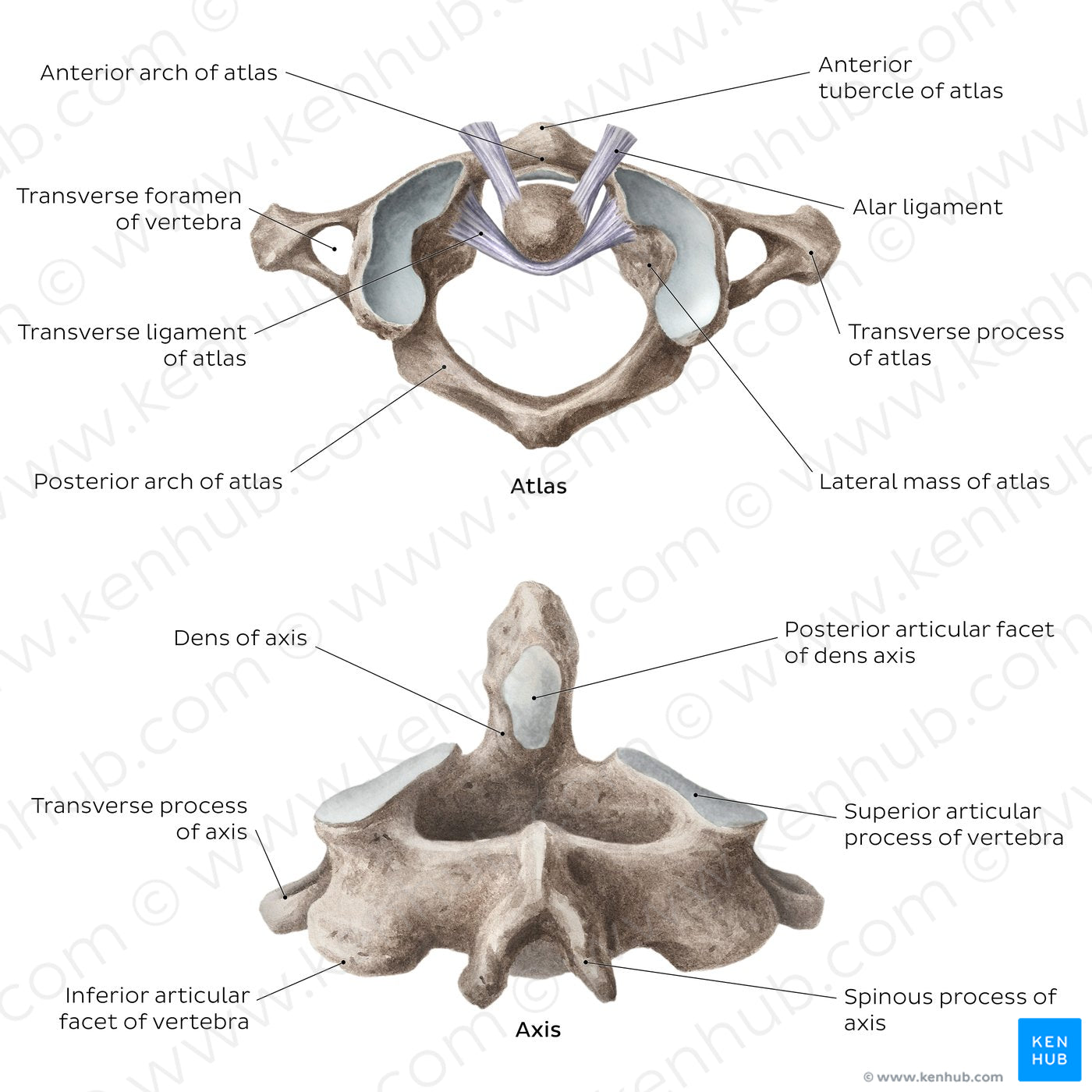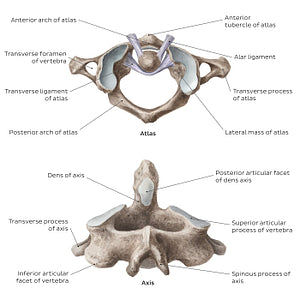Liene Znotina
Cervical spine bones and ligaments: atlas and axis (English)
Cervical spine bones and ligaments: atlas and axis (English)
The atlas (C1) is a ring-shaped vertebra, devoid of vertebral body and spinous process. It consists of the anterior and posterior arches which are connected via a lateral mass on each side, together enclosing the vertebral canal through which the spinal cord passes. Each lateral mass features articular facets on its superior and inferior surface and a single transverse process that projects laterally. The anterior and posterior arches feature several bony landmarks that provide the attachment points for the ligaments of the cervical spine. Moreover, the anterior arch contains an articular surface that participates in formation of the median atlantoaxial joint, a joint between atlas and axis. The superior and inferior articular facets of the lateral masses participate in the atlantooccipital and lateral atlantoaxial joints, respectively. The former is a joint between the atlas and the occipital bone, while the latter is a three-part joint between the atlas and axis. The transverse processes that stem from the lateral masses feature a small foramen called foramen transversarium. This foramen exists in vertebrae C1-C6 and it is traversed by the vertebral artery.The axis (C2) primarily differs from a typical vertebra by its prominent bony projection known as the dens (odontoid process). As a whole, the axis consists of anterior and posterior parts. The anterior part is formed by the body and dens, while the posterior part consists of two pedicles, two transverse processes, two laminae and a spinous process. The body of the axis is small and inferiorly elongated so that it overlaps the vertebra C3. It serves as an attachment point to several muscles and ligaments of the neck. The dens of axis projects from the superior surface of the body. It features an anterior articular facet which articulates with atlas at the median atlantoaxial joint and a posterior articular facet over which runs the transverse ligament of atlas. Either side of the dens, the body of the axis features superior and inferior articular facets which are located on its superior and inferior surfaces, respectively. The former participate in the lateral atlantoaxial joints, while the latter articulate with vertebra C3 via specialized zygapophyseal joints, which are sometimes collectively referred to as the vertebroaxial joint.
Precio habitual
$7.56 USD
Precio habitual
Precio de oferta
$7.56 USD
Precio unitario
por
No se pudo cargar la disponibilidad de retiro



